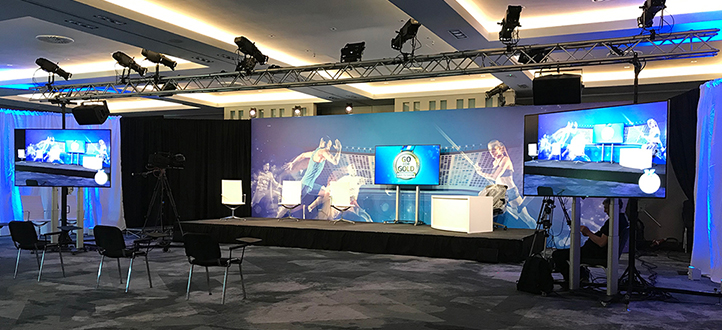Illuminating the Impact of Lighting Methods on the Art of Film Projections Mapping
Illuminating the Impact of Lighting Methods on the Art of Film Projections Mapping
Blog Article
Video mapping mapping is an exciting creative form that merges technology and creativity to convert ordinary spaces into extraordinary sight exhibits. This technique involves casting graphics and footage onto 3D elements, such as buildings, artworks, or stages. One of the key crucial factors in producing successful mapping is the use of effective illumination techniques. Proper illumination enhances the visual components of the projection and guarantees that the images are crisp and engaging. This piece explores the impact of illumination techniques on motion projection and how they can elevate the overall experience.
Lighting plays a vital role in video mapping because it establishes the atmosphere and tone of the display. Different lighting techniques can elicit various feelings and reactions from the audience. For instance, using soft, warm lights can create a welcoming environment, while vivid, cool illumination may produce a more energetic or intense impact. By carefully selecting illumination colors and brightness, creators can manipulate how viewers interpret the displayed images, leading to a more engaging encounter. The equilibrium between projection luminance and ambient illumination is essential, as it can significantly affect the visibility and best site impact of the visuals.
In addition to, hue and intensity, the direction of light also influences the effectiveness of mapping. Illumination from different directions can generate contrast and highlights that introduce depth to the projected visuals. This technique, known see it here as light and shadow, can enhance the three-dimensionality of the objects being mapped. Furthermore, using moving lights can introduce dynamism to the display, making the experience more engaging for the audience. When the light interacts with the mapped images, it can produce an effect of motion and transformation, capturing the viewers' attention.
Another important element of lighting in mapping in the use of special effects. Techniques such as gobo lighting, which uses patterns and shapes to filter light, can add texture and complexity to the mapping. This approach enables creators to superimpose visuals and create aesthetically captivating results that enhance the projection. Additionally, incorporating lasers or light-emitting diode illumination can additionally improve the display, offering a distinct blend of visual elements that draw the audience in. These unique features, when used thoughtfully, can elevate the projection beyond a simple display to an engaging work of art.
In conclusion, the influence of illumination methods on motion mapping is significant. By comprehending how various lighting elements connect with mapped visuals, creators can produce enthralling encounters that connect with viewers. The careful selection of color, brightness, direction, and unique features enables for a rich tapestry of sight storytelling. As technology continues to grow, the options for artistic expression in mapping will only grow, making lighting an increasingly vital aspect in this progressive art medium.